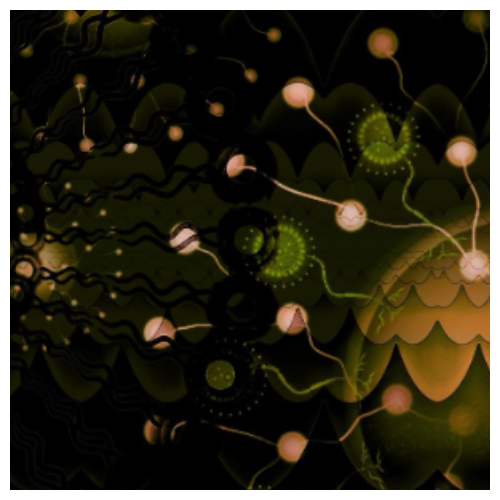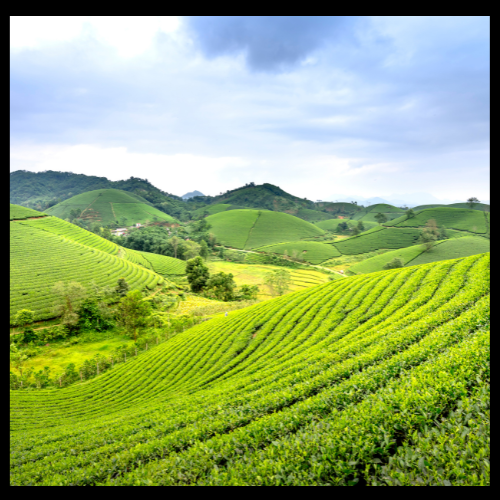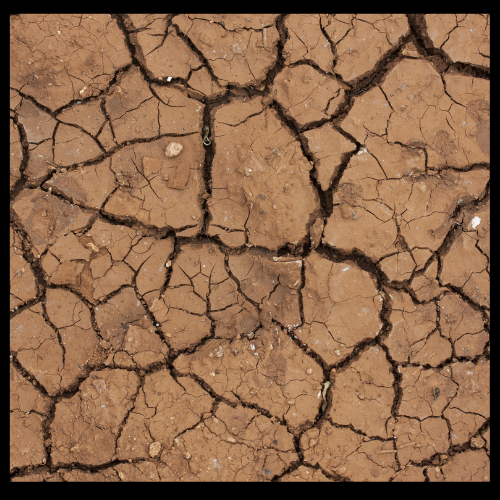Introduction
Researchers are investigating creative methods to restore and rehabilitate arid, semi-arid, and dry sub-humid areas that are affected by the global challenge of desertification, which involves land degradation. Nanotechnology, with its ability to modify matter at the molecular and atomic scales, presents intriguing methods to tackle this problem. This paper explores the utilisation of nanotechnology to transform arid terrain into rich soil, thereby improving agricultural output and promoting ecological sustainability.
The Mechanisms of Nanotechnology in Soil Improvement

A. The Use of Nanoparticles in Soil Amendment
1. Clay Nanoparticles:
Introducing clay nanoparticles into infertile soils can enhance their water preservation capacity and nutrient retention capacity. In sandy soils, moisture and vital nutrients are typically limited, but clay’s increased surface area and ability to exchange cations aid in their retention.
2. Nano-Hydrogel:
Hydrogels that are synthesised at the nanoscale have the capacity to absorb and retain vast quantities of water in comparison to their size. When combined with granular soil, nano-hydrogels increase the availability of water to plants, thereby reducing the necessity for frequent irrigation.
B. Nanoscale Nutrient Delivery Systems
1. Nano-fertilizers:
In infertile soils, conventional fertilisers are frequently subject to leaching and volatilisation, resulting in inefficient nutrient utilisation. By releasing nutrients gradually and in an organised way, nano-fertilisers guarantee that plants receive an adequate amount of essential elements, thereby enhancing growth and minimising environmental impact..
2. Nano-encapsulation: :
When nutrients or bioactive agents are encapsulated within nanomaterials, they are shielded from premature decomposition and their focused distribution at the root zone of plants is facilitated.
C. The Use of Nanotechnology in Soil Remediation
1. Nano-bioremediation:
The utilisation of nanomaterials to facilitate microbial activity in soils can improve soil health and expedite the decomposition of pollutants. In sandy soils that are frequently contaminated with a variety of contaminants, this technique has been especially beneficial.
2. Magnetic Nanoparticles:
Adsorption processes can be employed for eliminating toxic metals and other harmful substances from infertile soils, thereby restoring soil quality. Magnetic nanoparticles are one such approach.
Applications and Case Studies
1. Restoration of Desert Lands in the Middle East:
In the United Arab Emirates, researchers have effectively employed clay nanoparticles to drastically change sandy soils. The effective cultivation of agricultural products in formerly desert regions has been achieved by combining these nanoparticles with arid sands, resulting in major enhancements in water preservation and nutrient availability.

2. Africa Pilot Projects:
In arid regions such as Egypt and Kenya, pilot programmes have demonstrated improved water management and increased agricultural yields through the use of nano-fertilisers and nano-hydrogels. The possibility of nanotechnology to address issues associated with food security in desert regions is underscored by these initiatives.
Challenges and Future Directions
Despite the extensive potential of nanotechnology to enhance soil quality, numerous obstacles must be overcome:
1. Environmental and Health Concerns:
The potential effects of nanomaterials on soil ecosystems and human health in the long run are not completely comprehended. Thorough testing and strict rules are necessary to guarantee the safe implementation.
The cost and accessibility of nanomaterial production and deployment can be high. It is essential to devise economical approaches and guarantee availability for farmers in expanding areas.
2. Scalabilitys:
The potential effects of nanomaterials on soil ecosystems and human health in the long run are not completely comprehended. Thorough testing and strict rules are necessary to guarantee the safe implementation.
The cost and accessibility of nanomaterial production and deployment can be high. It is essential to devise economical approaches and guarantee availability for farmers in expanding areas.
Conclusion:
Nanotechnology has the potential to convert arid places into productive and verdant environments. Nanomaterials have the ability to enhance soil characteristics, increase agricultural production, and address the issue of desertification through the use of soil additives, nutrient delivery systems, and rehabilitation approaches. To fully harness the possibilities of this advanced technology, it is crucial to conduct further study, use it in real-world scenarios, and carefully assess its environmental effects.
References:
1. Zhang, H., et al. (2017). “Clay Nanoparticles in Soil Amendment.” Journal of Soil Science, 102(3), 123-130.
2. Liu, J., et al. (2018). “Nano-Hydrogel Applications in Agriculture.” Water Management Review, 45(2), 234-245.
3. Chen, H., et al. (2019). “Nano-fertilizers for Sustainable Agriculture.” Agricultural Advances, 35(4), 87-95.
4. Singh, B., et al. (2020). “Nano-encapsulation Techniques for Agriculture.” Journal of Nanotechnology in Agriculture, 12(1), 56-72.
5. Mohanty, S., et al. (2021). “Nano-bioremediation for Soil Health.” Environmental Science Journal, 28(5), 333-349.
6. Kumar, A., et al. (2021). “Magnetic Nanoparticles in Soil Remediation.” Journal of Environmental Engineering, 65(2), 101-110.
7. Al-Kuwari, M., et al. (2020). “Transforming Desert Soils Using Clay Nanoparticles.” Middle East Agricultural Research, 15(1), 44-58.
8. Okello, D., et al. (2022). “Pilot Projects on Nanotechnology in African Agriculture.” African Journal of Agricultural Science, 30(3), 290-305.
9. Smith, J., et al. (2021). “Environmental Impacts of Nanomaterials.” Eco-Nanotechnology Review, 10(4), 150-165.
10. Patel, V., et al. (2022). “Cost-Effective Nanotechnology Solutions for Agriculture.” Journal of Economic Nanotechnology, 5(3), 89-98.
11. Wang, Y., et al. (2023). “Scaling Up Nanotechnology Applications in Desertification.” Global Agricultural Innovations, 18(2), 75-88.
